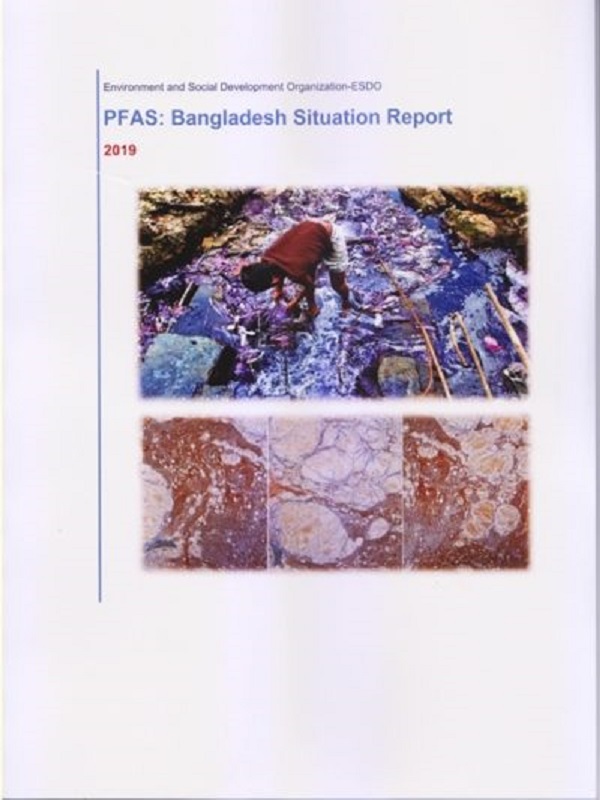PFAS: Bangladesh Situation Report

Executive Summary
Per- and polyfluoroalkyl substances (PFAS) are a group of man-made fluorinated organic compounds that are highly stable and persistent in the environment. These compounds have been used in industrial applications and consumer products since the 1950s, and many different PFAS have been detected in environmental media, food, biota and human serum. However, the presence of PFAS within environmental samples was not widely reported until the late 1990s and early 2000s. The most commonly studied PFAS are perfluorooctanoic acid (PFOA) and perfluorooctane sulfonic acid (PFOS). The next most commonly studied are perfluorohexane sulfonic acid (PFHxS), and perfluorononanoic acid (PFNA). The chemicals are very persistent in the environment and in the human body – meaning they don’t break down and they can accumulate over time.
The report is done by Environment and Social Development Organization (ESDO). This report is prepared under the IPEN initiative on country situation on PFOA and based on existing data, journal review and secondary source. ESDO has documented information on the PFAS generating practices and the contaminated sites in the country as the first attempt in this report. The information presented here can be seen as a tip of the iceberg. It is necessary to conduct further investigation on the issue and to come up with a comprehensive documentation of the PFAS situation in Bangladesh. This shall be important in taking remedial measures.
Findings reveal that there is no significant PFAS production in Bangladesh. However, import and use of PFAS and PFAS-containing products are likely to be the main source of PFAS pollutants. These are used mainly in manufacturing industries and are found in different industrial area like Dhaka city and the surrounding areas namely Gazipur, Norshindhi, Narayanganj and Chittagong, Cox’s Bazar, Khulna, Sylhet, and Rajshahi.
This report reviews the indiscriminate use of the hazardous chemicals and its dangerous effect among general users of PFAS containing products. This report reveals that textiles products that are manufactured in Bangladesh and sold to Argentina contained 29.7µg/ kg ionic PFAS and 6967µg/kg volatile PFAS which exceeds EU PFAS regulatory limits by approximately 30-fold to 7000-fold for ionic and volatile PFAS respectively.
This report also discloses that about 93.55% of women in Bangladesh are suffering from the problems of kidney and asthma; and about 10% women are suffering from pregnancy related problems. PFOA, which is used in nonstick cookware, has been linked to pregnancy-induced hypertension and preeclampsia.
From the study findings it can be said that people of Bangladesh are not aware about PFAS pollutants. Moreover Bangladesh has no policy to stop such pollution; even there is no specific governmental data on the hazardous chemicals. So, it is unavoidable to formulate a policy to stop PFAS containing products manufacture and reduce PFAS pollution in Bangladesh. Moreover, mass awareness about PFAS containing products and its health and environmental impact is very important task kickoff.
For Detail Report, Please contact with us: info@esdo.org


